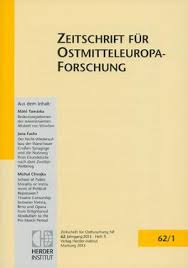Zeugen einer großgermanischen Vergangenheit? Das SS-Ahnenerbe und die archäologischen Forschungsstätten Unterwisternitz und Solone
Witness to a Greater Germanic Past? The SS-Ahnenerbe and the Archaeological Research Sites of Unterwisternitz and Solone
Author(s): Martijn EickhoffSubject(s): Archaeology, Political history, WW II and following years (1940 - 1949)
Published by: Verlag Herder-Institut
Keywords: Witness; Greater Germanic Past; SS-Ahnenerbe; Archaeological Research Sites; Unterwisternitz; Solone;
Summary/Abstract: This paper focuses on two archaeological excavations carried out by Dutch prehistorians Assien Bohmers and Frans C. Bursch during the Second World War in the villages of Dolni Věstonie (Unterwisternitz) and Solone (Solenoe). These excavations were contracted by SS-Ahnenerbe – a SS research unit – and are therefore examined not only in conjunction with the history of East Central Europe and the history of archaeology, but also on the micro-level, where institutional, organisational and biographical aspects are incorporated alongside cultural and social backgrounds. The inspiration here is the post-colonial approach, in which scientific expeditions carried out outside Europe are understood as a process in which each party influences the other. It thereby becomes clear how during the Second World War, the SS-Ahnenerbe tried to portray the two research sites as material witnesses to a Nordic-(Indo-)Germanic past. In the scenario, Unterwisternitz was a symbol of “origin” and Solon symbolised “propagation”. At the same time, the Czechoslovakian and Ukrainian interpretations (and significance) of the research sites were to be obliterated. Nevertheless, the excavations – including the fact that SS archaeologists had ever been involved on-site – were soon forgotten after 1945. This leads one to the conclusion that SS-Ahnenerbe was indeed a highly active National Socialist scientific organisation and that they developed a new militant and “Greater Germanic” scientific style and a new practice which at the time was directly connected to the terrorist interventions of the National Socialists. The avant-garde nature of the SS organisation did, however, also contribute to the fact that their activities had little “effect” outside their own SS circle.
Journal: Zeitschrift für Ostmitteleuropa-Forschung
- Issue Year: 62/2013
- Issue No: 4
- Page Range: 581-620
- Page Count: 40
- Language: German

